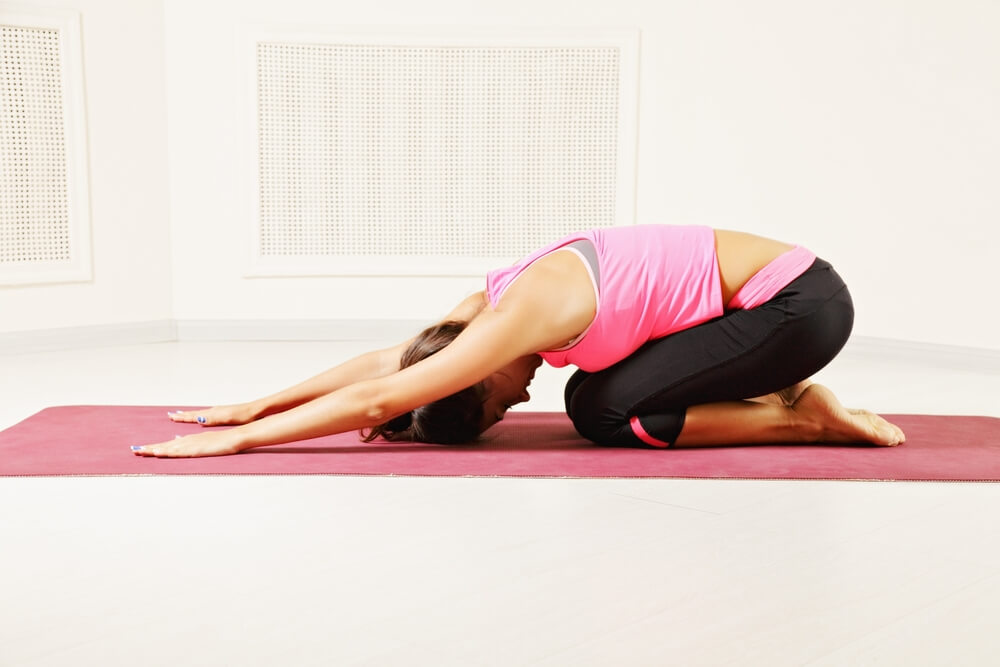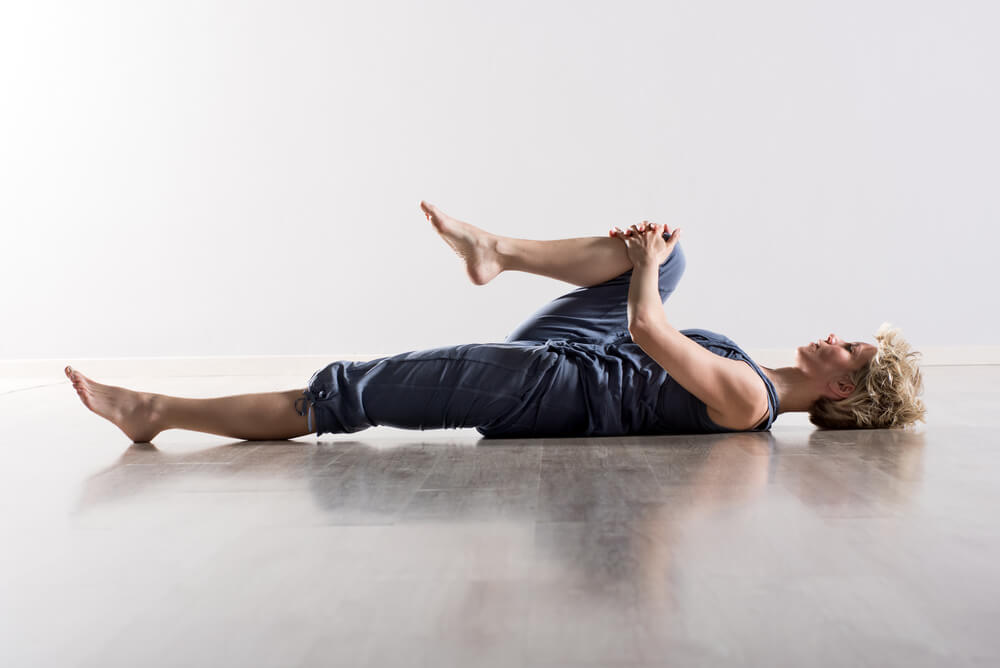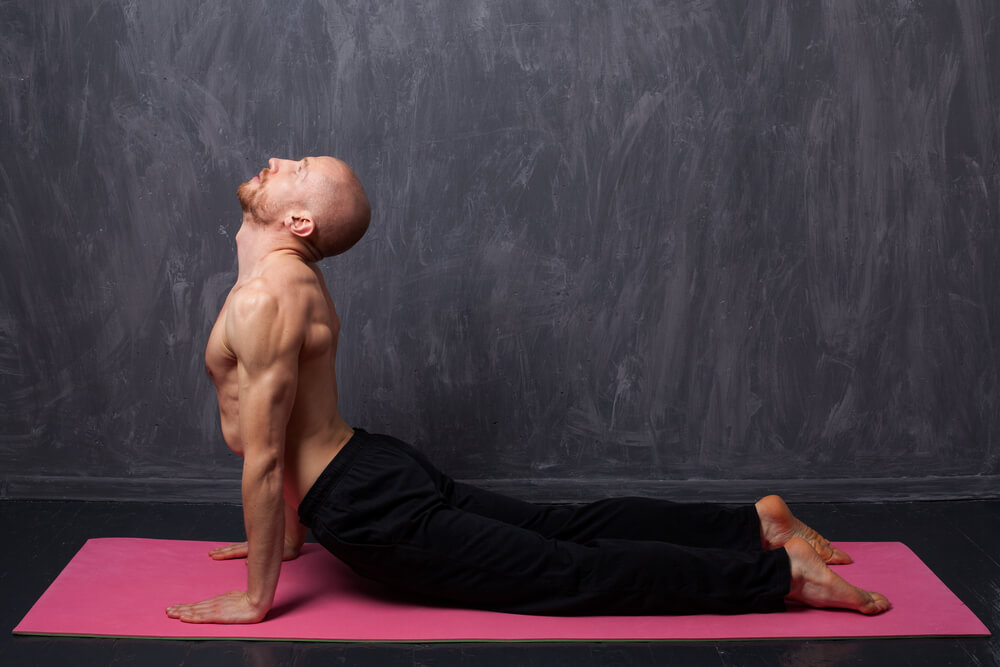
Back pain is brutal. That’s why you need to take care of your back. How? You should be stretching. We give you the good and bad stretches to ensure you’re taking proper care of your back.
Back pain is one of the most common complaints in the U.S. People spend loads of money on doctor bills, scans, and medication to reduce the pain. Improper stretching of the back muscles has left people lying in bed for days on end. That’s why it is vital to know that there’s a wrong way and a right way.
There are many ways to possibly prevent and even reduce back pain. Stretching the back muscles improperly can do more harm than good and when you learn how to stretch them correctly for full function of the back, you may be able to prevent future injuries.

Why Do We Even Need To Do Back Stretches?
Many of my clients want to save time and get right to the workout and get out as fast as they can so that they are able to get to work, start their day or do whatever it is that they have planned. I find them asking to skip the stretching before and after the workouts, but that is not such a good idea and I’ll tell you why.
Stretching the muscles isn’t just for flexibility. It does a few other things you may not be aware of as well. When we warm our bodies up first, and get the heart rate elevated, the heart pumps oxygenated blood and nutrients to the muscles, giving them the power that they need to complete a workout. Dynamic stretching is then followed by or included in your warm-up to ready the muscles for exercise.
After the workout is complete, a cool down should be performed.
Why?
The reason is because during your workout, your heart rate is elevated and the blood is pooled around the muscles in all of your extremities (the same blood you wanted to be there to take oxygen and nutrients to your muscles).
Quitting and walking away at this stage is a bad idea. It can cause fainting and place unnecessary stress on your heart. That’s why your heart rate needs to be brought down to near normal to get the blood circulating back to it.
A series of static stretches should be completed for all major muscle groups, including the back. Static stretches are stretches that you hold for anywhere from 10 to 20 seconds, or longer if you prefer. As you perform many muscle contractions during your workout, your muscles are left in a shortened state. Stretching your back muscles resets them to their natural state, lengthening them and aiding in better posture. This also prevents extreme soreness and injuries.
When it comes to the back, this is pretty much your foundation (okay maybe your feet are your foundation but hear me out). Without a healthy back, there is not much you can do, even when the rest of your body is in prime shape. We use our backs to lift heavy objects, to twist, to reach, to bend down and pick something up and to perform many other everyday tasks.
So if you are stretching your back regularly, this is part of maintenance for your back. It will keep your back healthy for years to come as long as you are doing the best types of stretches.
The Worst Back Stretches You Never, Ever Want To Do
If stretching is so healthy for your back, then why is there a section here that has bad and stretch in the same sentence you may ask. There are certain stretches that can actually be more harmful than helpful. They can put your body in a position that is dangerous to the spine and/or muscles. Right away, or over time, this can cause injuries or wear your back down.
Bad stretching of the back can lead to spinal injuries, not just muscle pulls. It can also lead to hip pain, joint pain and even neck pain. So, pay attention to your body and your stretches and do not do any of the following:
The Lower Back Rotational Stretch
This stretch is performed by lying on your back with your hands out to the sides, knees bent and twisting them to one side or the other while your shoulder blades are kept on the floor.
Why is it bad?
Simple, the reason is because the lumbar vertebrae (lower spine) are not built for rotation. The lumbar vertebrae can only twist by one to three degrees while the thoracic vertebrae can rotate up to 10 degrees. Forcing the lumbar vertebrae to stretch any further than it is capable of can cause damage to your spine and back pain.

The Double Knees To Chest Stretch
This stretch is done by lying on your back, bending your knees and pulling them in towards the chest using your arms as if you were hugging around them.
Why is it bad?
The double knees to chest stretch reduces spinal stability by triggering a stretch reflex and causing your muscle to relax. It takes up to 20 minutes until it’s able to contract again. This stretch also causes pushing of the spinal discs in the wrong direction. This leads to a misalignment of the spine. Also, when a lot of people are in the midst of this stretch, they get the instinct to lift their head off of the ground. This puts a lot of stress and tension on the neck muscles, which can lead to soreness.

The Standing Toe Touch Stretch
This stretch involves standing with both feet together, hinging at your hips and reaching your hands down towards the toes.
Why is it bad?
A lot of people use this position to stretch the hamstrings and/or the lower back. When you are using the stretch for your lower back, it’s not very effective at all if you have tight hamstrings because that’s what your brain will naturally focus on. This doesn’t allow you to get a full stretch in the back.
If your hamstrings are not an issue, it’s still not a safe stretch to do for your back because it puts the spine in a susceptible position for injury when it is fully flexed. This stretch also causes ligaments in the lower back to become stretched, over time resulting in a loosely held lumbar spine.
The Best Back Stretches To Perform!
It can be pretty disappointing to find out that you’ve been doing the worst stretches for your back when all along you thought you were doing something healthy. The stretches just mentioned have been around for decades, but as more and more research surfaces, the truth comes out and it’s too bad that most of us have been the guinea pigs.
The good news is there are plenty of other safe stretches (at least until some other study comes out) for your back that you can do to keep that range of motion, promote flexibility and prevent injury.
Cat-Cow Stretch
The yogis got it right with this extension and flexion sequence. It’s a great stretching exercise to warm up your spine and relieve tension from your neck and back without any added or unnecessary pressure on the spine.
This is how to do it: Start with your knees and hands on the floor, knees under your hips and hands directly under your shoulders. Keep your spine neutral, abs engaged and take a deep breath. As you exhale, be sure to round your spine upwards (as though to touch the ceiling) and pull the belly button in towards your spine. Gently tuck your chin in closer to your chest and relax in the neck. This is the cat pose.
Take another deep breath, round your spine and let your stomach go loose. Raise your head and tailbone, as though you are trying to reach the ceiling without putting any tension on your neck. This is the cow pose.
Continue going back and forth between cat and cow positions. Do not forget that your breathing is important. Repeat as many times as you need or want.

Back Stretch With A Stability Ball
The stability ball has always been one of my favorite pieces of equipment because it allows you to do so much from strengthening your core to stretching your entire body. With this particular stretch, the stability ball acts as a support and allows your back to safely stretch without added pressure on your spine.
This is how to do it: Carefully drape yourself over the stability ball on your belly. Place your hands on the floor in front of you and tuck your knees in towards the ball. Your toes should be on the floor to prevent rollback. Slowly bend at your elbows and lower onto your forearms. Relax your head down and loosen any tension in your neck. Make sure to breathe deeply during the stretch while allowing your back to relax into the stretch.

Cobra Stretch
I can’t help but bring another yoga pose into the mix of the best back stretches.
Why?
Yoga in itself is all about healing, relaxation, and proper posture. Of all the yoga classes I’ve taken, I can honestly say that I have left each one of them feeling more limber, having more energy and taking off in a better mindset and overall feeling than before I got there.
The cobra stretch (or pose) has been deemed safe in most of my research of articles written by both yoga teachers and health care professionals. I’ve never had an issue with this stretch and the great thing about it is that it not only helps with back extension, but it also strengthens the back muscles to improve posture.
This is how to do it: To begin lie on your stomach with your legs extended behind you and toes pointed. Your head should be relaxed on the mat, face down. Bend your elbows and place your hands, with the palms facing down, under your shoulders. Inhale and raise your chest off the ground by pressing gently with your hands against the floor/mat and engaging the back muscles.
Your back should be doing most of the work, so you can lift your hands off the mat to make sure that your back muscles are fully engaged, then rest the hands on the mat again. Your elbows should be slightly bent at this point. If you want to go further into the stretch, you can fully extend your arms to straighten them. Hold for a few breaths, relax and repeat.
Conclusion
Stretching your back can be very beneficial in many ways. Still, there are a few things to remember when doing stretches of any muscle in the body.
You never want to force a stretch by pushing your body further than it is ready to go. It’s fine to feel a little discomfort in a stretch, but never okay to feel pain. Never bounce into a stretch as this can also cause overstretching and injuries such as muscle pulls and tears. You never want to jerk yourself out of a stretch either. Always release the stretch slowly and gently to ease back into your natural position.
Be sure to always be aware of proper alignment. If you are doing a good stretch, but not positioned correctly, this can be a ticket for disaster. During a stretch, try and focus on the muscle to be stretched and keep tension out of the rest of your body. And remember, some people are naturally more flexible than others so don’t make it a competition. Work your way up to full stretching slowly and safely. Take care of your back and your back will take care of you.
By Heather Neff, CPT
Latest posts by Terry M (see all)
- Garage Gyms - Aug 1, 2018
- Kettlebells – Why They Should Be Added To Your Routine. - Jul 24, 2018
- Weight Belts: What Are They Really For? - May 31, 2018











Stretching is always important to start your workout routine. It helps us in building muscles as it gives muscles a room to grow more.